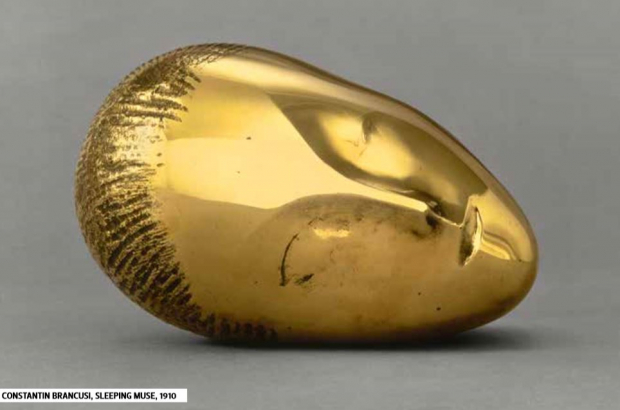- Daily & Weekly newsletters
- Buy & download The Bulletin
- Comment on our articles
Look east: Cultural festival Europalia turns to Romania for a timely dialogue between countries and communities
The biennial Belgian arts festival Europalia is turning its attention to Europe this year, with a focus on Romania. It follows a decade of cultural globetrotting during which the 50-year-old event has immersed itself in art and performance from Brazil, India, Turkey and, most recently, Indonesia.
The festival unfolds over four months, from October to January, at venues across Belgium. It delves into Romanian history and culture while showcasing some of its most interesting contemporary artists and performers. There will also be new creations by Romanian and Belgian artists. “It’s all about trying to create a dialogue between different countries and communities, through art,” explains Dirk Vermaelen, Europalia’s artistic director.
The flagship exhibition is a retrospective of the sculptor Constantin Brancusi at Bozar in Brussels. Brancusi is Romania’s most famous artist and a major figure in 20th-century art, yet this will be the first retrospective of his work in Belgium. According to Vermaelen, it will also be the largest since the Centre Pompidou’s Brancusi exhibition in 1995. “You will have to wait another twenty-five years or more to see these works together, so people should bring their children and grandchildren,” he says.
Brancusi left Romania as a young man to live in Paris, but remained intimately connected to his homeland. Themes from Romanian folklore recur in his work, and some of his methods – such as direct carving in wood – come from traditional art rather than his academic training. The exhibition will follow his development, from academic works made in Romania, though the first figures he produced during his early years in Paris, to some of his most celebrated sculptures, such as Mademoiselle Pogany and Bird in Space. “The underlying theme is the sublimation of form,” Vermaelen says. “What is typical of his work is that he has a limited set of subjects, which he repeats, trying to find their essence.”
Within this chronological approach, the exhibition also looks at the way Brancusi used photography to stage his sculptures, his sexual imagery and how it connects with Dada, and the importance of movement and dance in his work. This last theme is picked up in performances and installations commissioned by Europalia from Belgian and Romanian artists, including noted choreographer Anne Teresa De Keersmaeker.
The traditions that influenced Brancusi still have a strong presence in Romanian art and culture, a connection that makes the country particularly interesting for Europalia. “If you look at Belgium, and the surrounding regions, we have lost a lot of traditions,” Vermaelen says. “At a certain moment, they were seen as something we didn’t need any more, but now many of our artists are doing research on traditions and going to other countries to look for rituals.”

This is picked up across the Europalia programme, for example in Traces, by choreographer Wim Vandekeybus, a new performance inspired by Romanian fables and its ancient forests. This will premiere in Bruges in December before touring to Hasselt and Brussels. In another medium, Belgian textile designer Daniel Henry takes inspiration from embroidered, woven and felted materials in Bucharest’s Peasant Museum to produce a new show at Les Drapiers gallery in Liège.
The earliest roots of Romanian folklore are explored at the Grand Curtius museum in Liège, in an exhibition on Neolithic and Bronze Age cultures along the lower Danube. The story then continues at the Gallo-Roman Museum in Tongeren, with an exhibition on the Dacians and other peoples living in the Romanian lands when they were conquered by the Romans in 106 AD.
Perspectives, at Bozar, presents an artistic history of Romania, from the 19th-century search for national identity and independence through to the fall of Communism in 1989. “It explores how art in Romania evolved, with contemporary artists reflecting back on these periods, recurring themes and, at its centre, a focus on the Romanian historical avant garde,” says Vermaelen.
Romania can also be approached through its cinema. An extensive retrospective begins at Bozar with Jean Mihail’s 1925 silent film Manasse, with live musical accompaniment, then continues at Cinematek with themes such as propaganda and subversion, rebels, family portraits, literary adaptations and genre films. Masterclasses will be given by directors Adina Pintilie, Andrei Ujica, Cristi Puiu and Radu Jude.
But the highlight of the film programme involves Kinema Ikon, a collective that made experimental collages in the 1970s and 1980s, scavenging material from Communist propaganda films. These rarely seen films will be presented at the Ghent Film Festival in October, and then in Brussels, with new soundtracks commissioned from Romanian and Belgian performers.
Top photo: Centre Pompidou, MNAM-CCI, Dist.RMN-Grand Palais - Adam Rzepka, Sabam Belgium, 2019. This article appears in The Bulletin autumn 2019, out soon in newsagents around the country



















